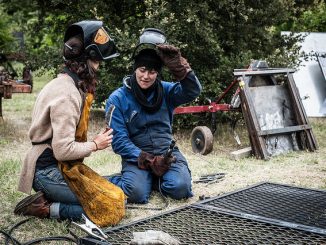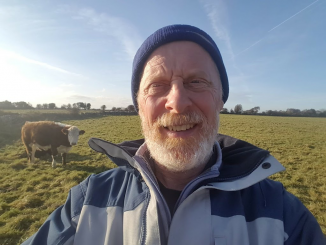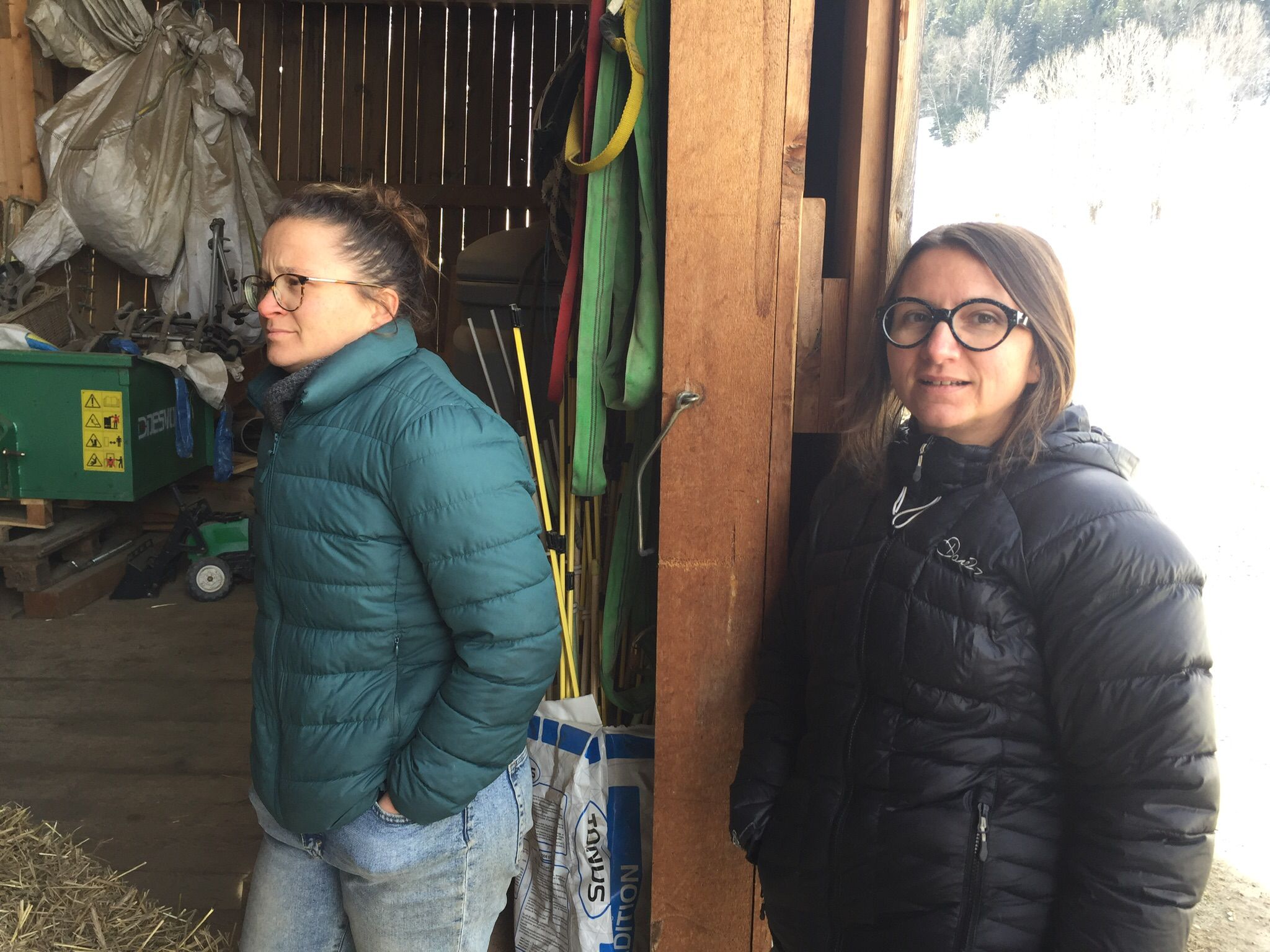
French farmers aren’t against wolves. Large predators have their role to play in the ecosystem. But with wolf poulations on the rise in many regions, livestock farmers are demanding more supports from the state to keep the wolf from the door. Yet while farmers may be prepared to co-exist with wolves, many rural residents and visitors are far from accepting, and there is much work to be done on public awareness. Valérie Geslin reports from Salon à la Ferme in the French Alps.
The highlight of the agricultural calendar in France is the glitzy Salon de l’agriculture, a high-flying industry fair that attracts politicians and the movers and shakers of big ag. However, small farmers are increasingly relegated to the back rooms of the event. In response the Confédération Paysanne (the French member of Via Campesina), in partnership with peasant farming network FADEAR, organises a counter-event, “Salon à la ferme”. Hosted by 200 farms around France, the ‘fair on the farm’ is a chance for visitors to meet with smallholders and chat about their craft.
ARC2020 visited GAEC de la Fontaine, a sheep and goat farm in the French Alps run by Marine Huaux et Loïc Perriaux. Wolves were top of the agenda in a programme of discussions on topics specific to upland farming.
Julien van Ee, a goat and sheep farmer, is a member of Confédération Paysanne’s National Predators Committee, with responsibility for wolf issues. He summarised the current state of affairs:
“We’re not against wolves; they have their place in the natural environment. We work with forests, grass, the weather, fauna, and the presence of wolves demonstrates a certain biodiversity, a certain nature value. But how will we manage to co-exist in a single territory?”
Wolves first arrived in the French Alps via Italy in 1992, and gradually colonised every region in France. The French Biodiversity Office monitors the size of the wolf population by collating counts sighting from park rangers, trained personnel, and mathematical models linked to genetic data. The population currently stands at between 480 and 824, giving a median of 624. On the European Alpine range, 10-15,000 individuals have been logged. To help track the population, the French state has created a wolf map that indicates the location of attacks in real time so that users can adapt accordingly.
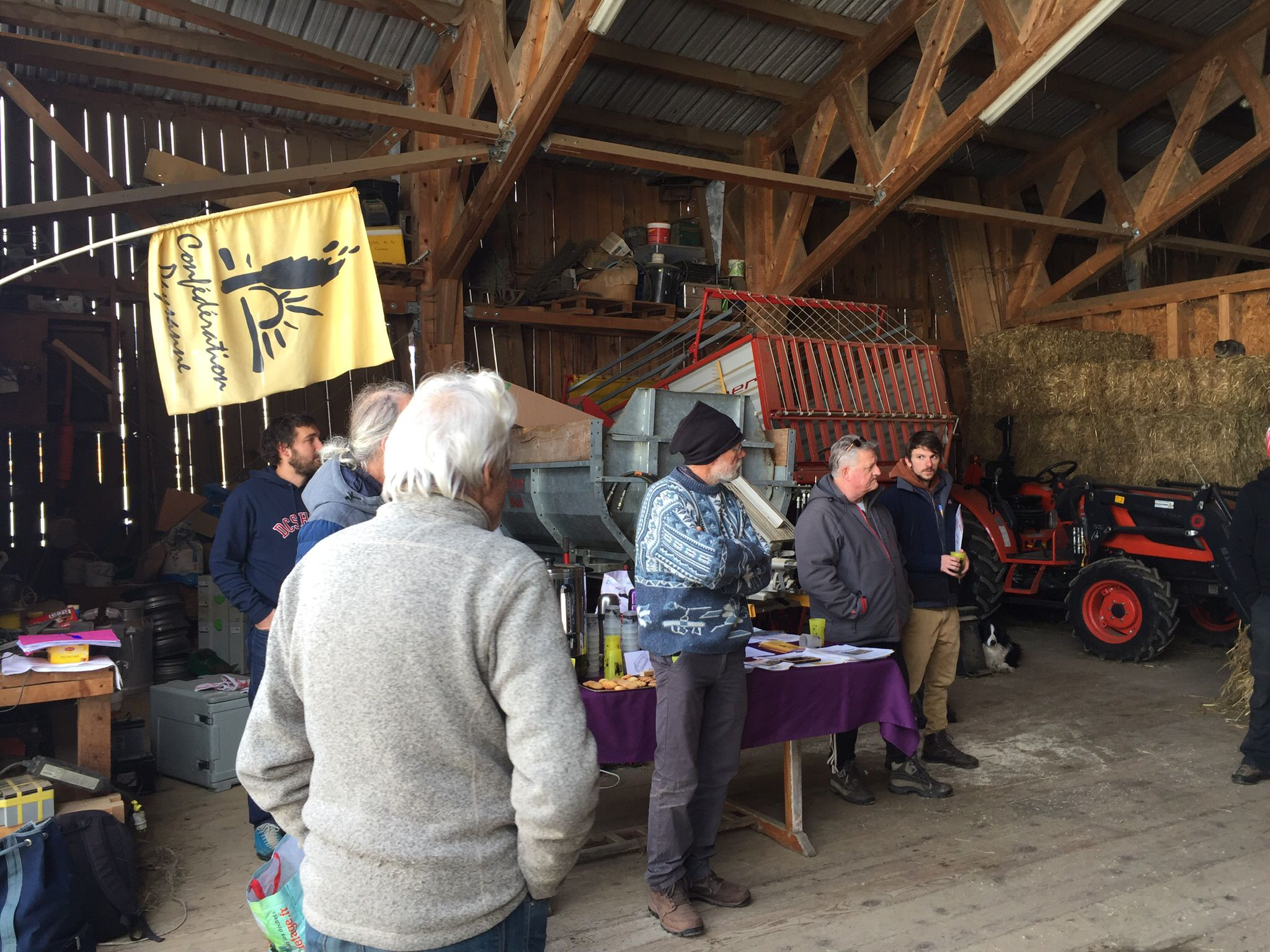
Dogs, electrics fences and shepherds
It is important for the various administrative areas to be able to anticipate and put in place appropriate protective measures: dogs, electrics fences and shepherds. A farmer must have at least two of these three protective measures in place to be entitled to compensation for damages related to wolf attacks. It costs the French state €32 million annually, excluding compensation for livestock killed. Of course this amount is set to increase since the number of protection agreements increases every year. But with the budget capped at €35 million, Confédération Paysanne is concerned that the State is disengaging from the issue.
Farmers can avail of several supports to fend off wolves. The state subsidises the purchase of electric fences, and the training and feeding of livestock guardian dogs (LGDs), of which there are some 5,000 in France, to the tune of €800 a year per dog. In addition, farmers are calling for the creation of a legal status for LGDs, to protect farmers against recurring complaints. As Confédération Paysanne stated in a press release on 28 September 2021:
“With the issue on the rise in France, the State must go further: legislate by creating a special status for livestock guardian dogs, in order to affirm that coexistence with large predators is everyone’s business and obliges all of us to make concessions.”
To help farmers to pay their shepherds, the state subsidises 80% of a shepherd’s wages, although the payout is capped according to the number of heads of livestock, which can be limiting. Additional relief comes from a ‘support shepherd’ mechanism that was trialled in several départements last year, whereby nomadic shepherds can come and watch the flock for a few days. Studies show that in zones with wolf populations, shepherds work between 14 and 15 hours a day, raising questions about working conditions and labour laws. A first response for these forgotten shepherds, the ‘support shepherd’ mechanism is now to be debated at national level.
All these measures require an enormous amount of work, organisation, taking into account new constraints for the farmer. The state has taken note of the problem but efforts must continue, says Confédération Paysanne. It’s good but not enough. The state must finance these measures 100%, and over the long term.
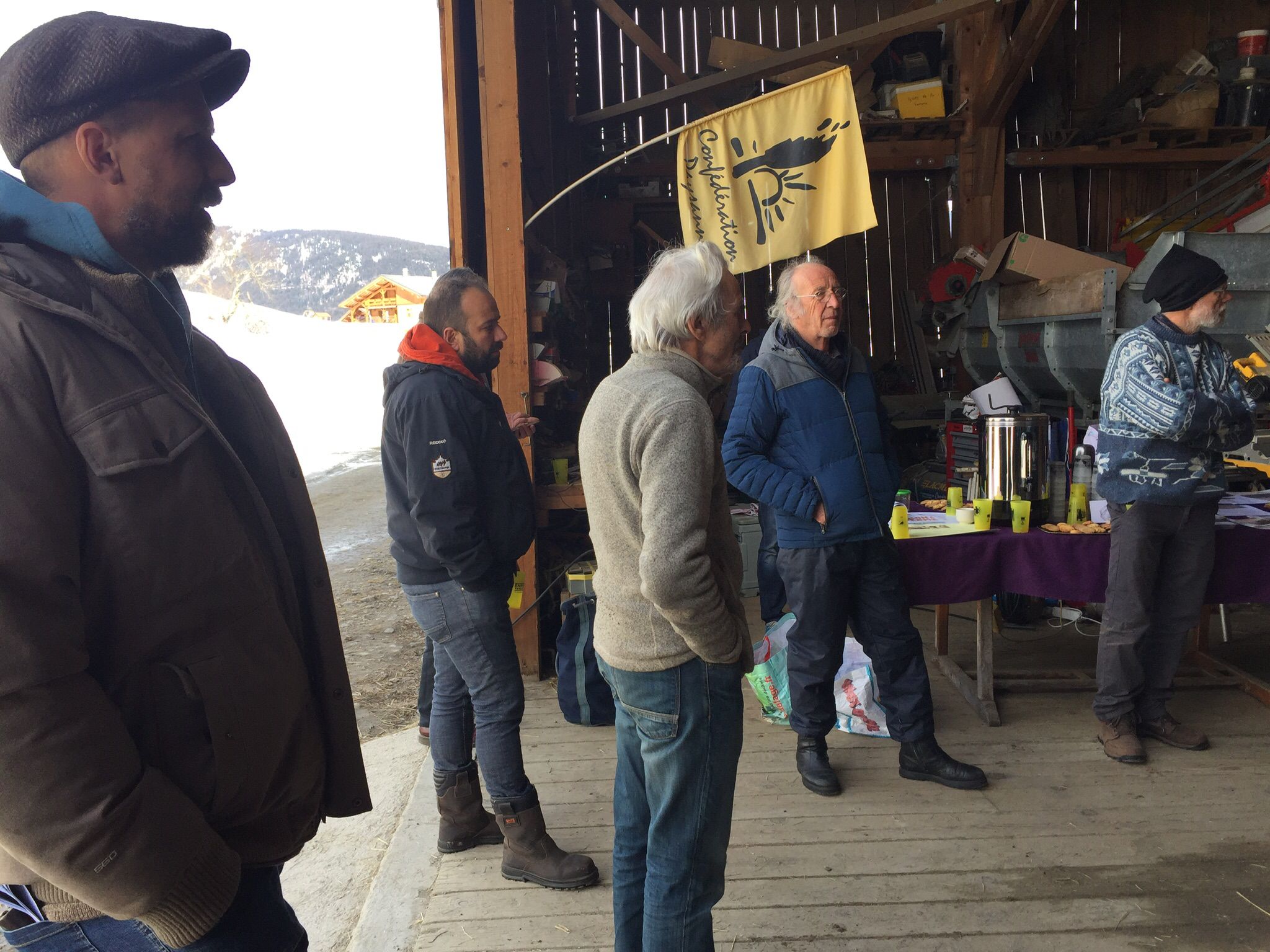
Conservation and culling
According to the Bern Convention for the conservation of endangered species, signed by France in 1979, it is prohibited to kill wolves. However culling is allowed under derogation in the event of attacks – up to 108 wolves may be culled annually, which is 19% of the total estimated population in France. In zones of attack, farmers have the right to shoot to defend their herds from predators (once they request a permit from the prefecture, and have a hunting licence, a rifle and insurance). But this is not the job of farmers (although those who want to, can do so, of course)! Farmers have enough to do with saving hay, milking, sales, and upland land management. It is up to the state to be present on the ground with human and financial resources to protect herds. Culling must be targeted and carried out by state officials in all zone 3 departments of France. People will have to learn to live with wolves, and adapt accordingly.
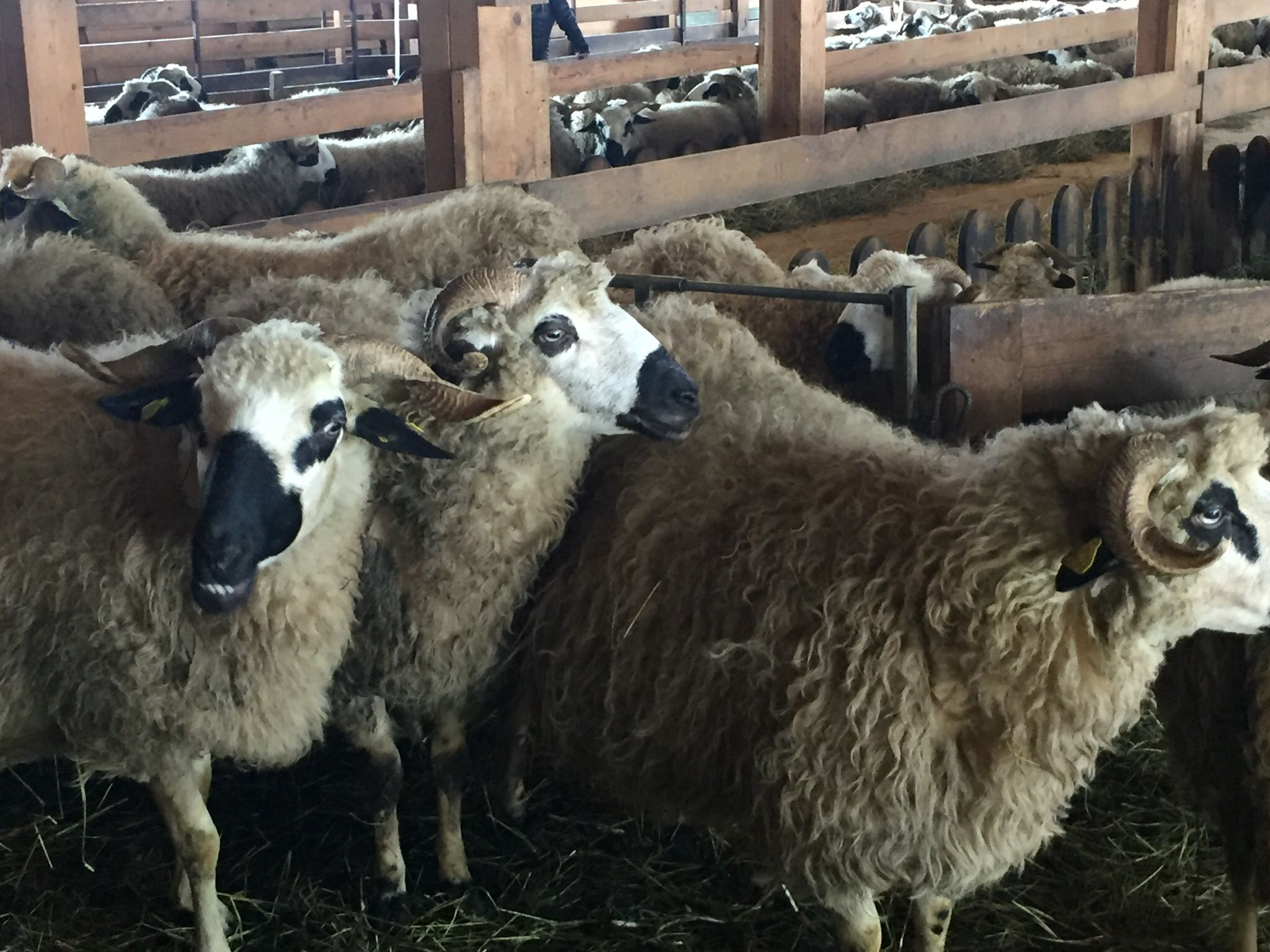
Wolf brigade
A team of 13 specialists is employed by the French Biodiversity Office to protect herds in the uplands and lowlands of the Southern French Alps. For now it’s the only Wolf Brigade in France. The scheme needs more staff and more resources, argues the Predator Committee. Humans are the best defence – but humans are expensive. Wolf Brigades should be present all over France. Currently the state primarily relies on wolf catchers and specially trained hunters to protect herds. Certain départements provide them with equipment. The wolf catchers work on a voluntary basis; their expenses are paid, but they have to be motivated. In Isère, two years ago, there were over 100 consecutive nights without incident.
On average 12,000 sheep are killed in France every year. Most losses occur in the Southern French Alps. A wolf attack may cost the lives of three animals, and the flock are left stressed and anxious; the fallout may include abortions, orphaned lambs, or lactation issues. The flock may have reproductive issues over the following three, four or even five years. It’s a significant drop in production and in productivity for farms. The genetic base suffers.
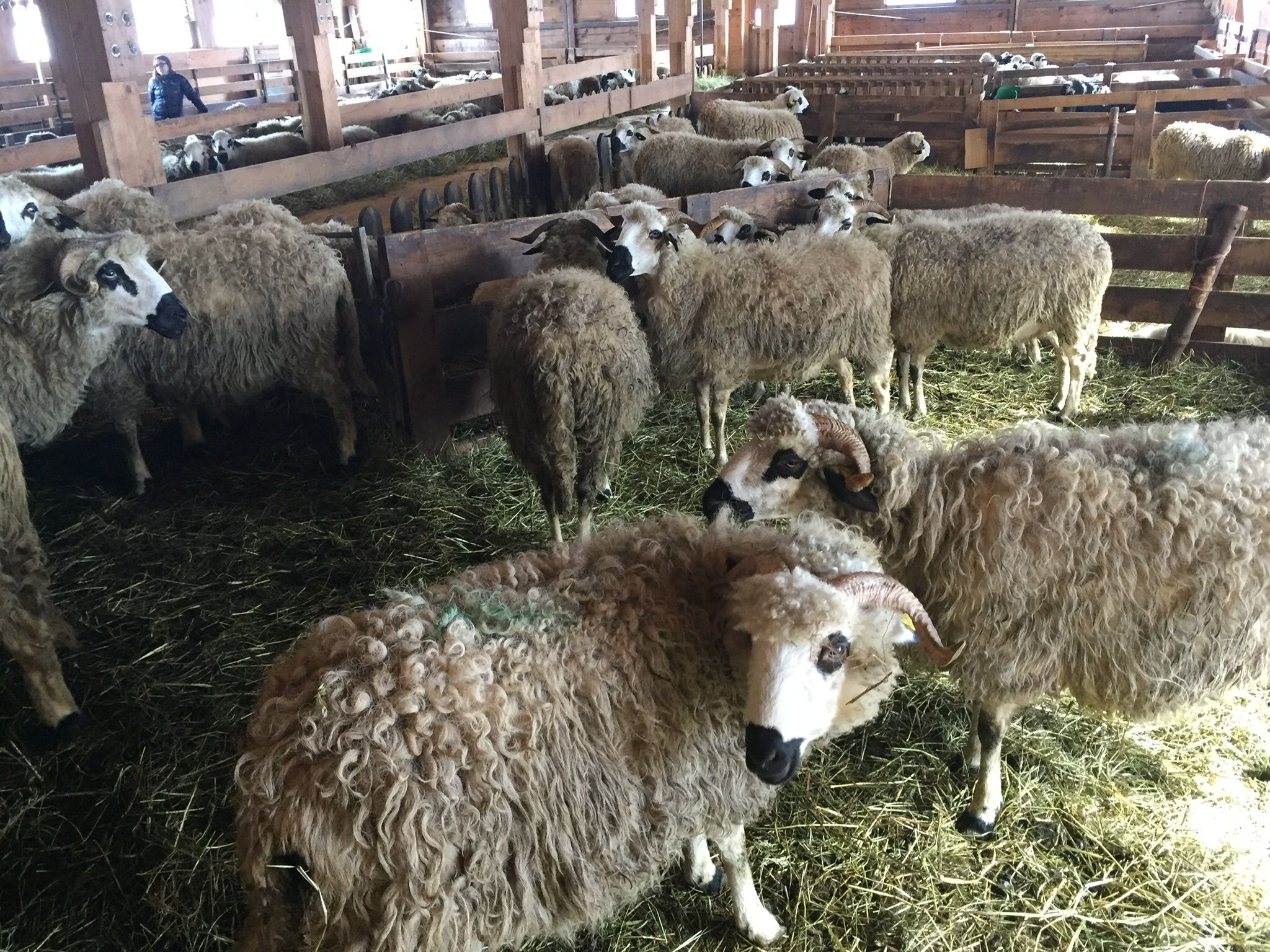
Constant stress
For livestock farmers, it’s a constant source of stress. When will it happen? How many will I lose? What will it do to my dogs, my shepherds, my herd? It’s a daily concern. Flocks of sheep are now well protected even as attacks continue. Other herds, however, are being targeted, including cattle. New problems are emerging. In the hope of finding solutions, ethologists are experimenting with ways to study the behaviour of the wolves.
Predators and attacks are an everyday reality, compounded by on-farm issues such as managing dogs and paddocks. But people can also present challenges. Livestock guardian dogs can attack unsuspecting walkers, or their children or pet dogs. Farmers have to explain themselves to environmental groups. The Committee is calling on the state to inform and warn the public of the risks surrounding livestock guardian dogs. For now the state provides signage, but that isn’t enough. Information staff are needed to appraise tourists of the risks and teach them how to react.
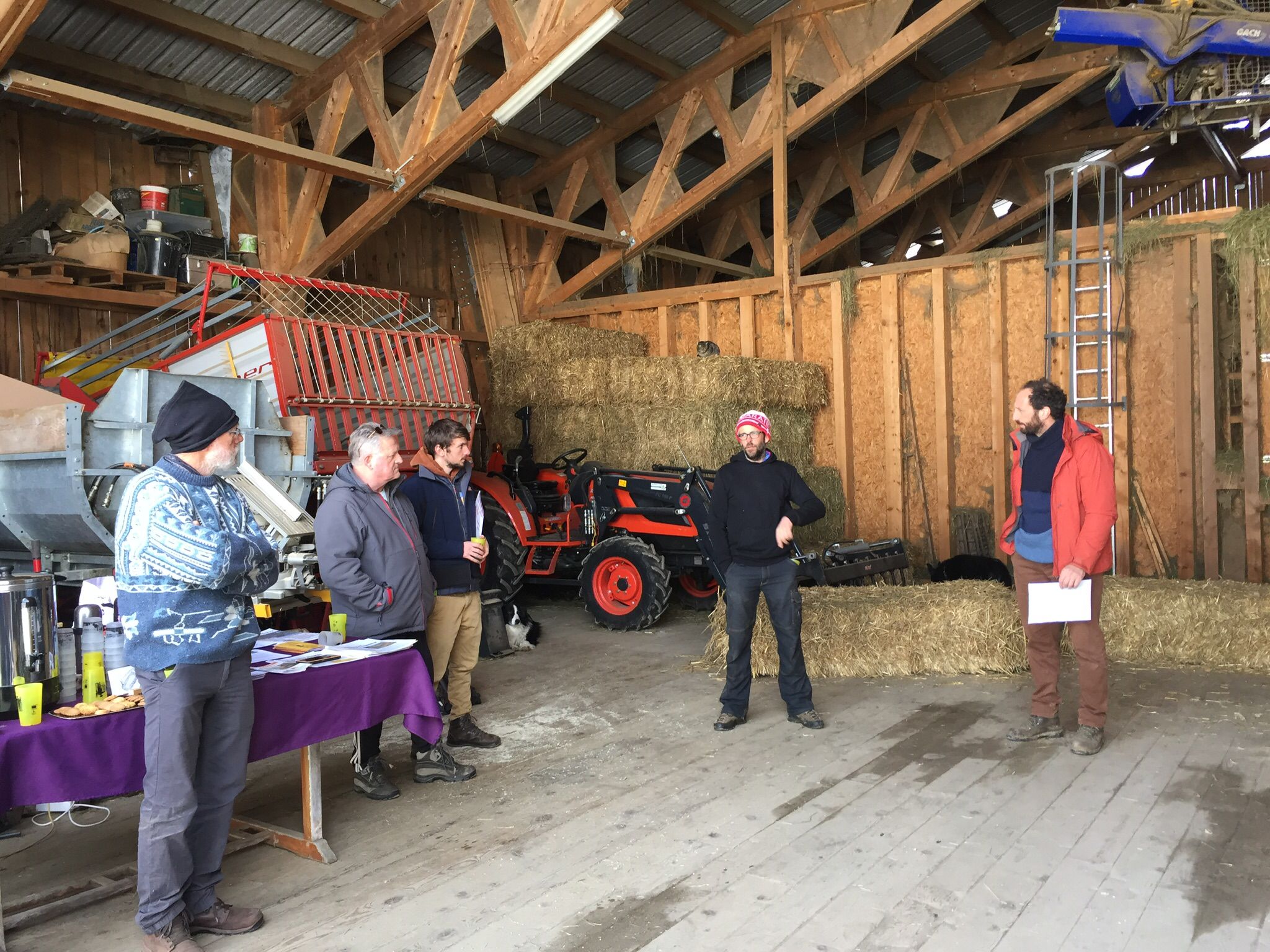
What one farmer has to say
“Before, it wasn’t very complicated, we took our sheep up and brought back them down twice a week to a watering hole and a salt block. We counted them and everything was fine. After the predators came, everything changed. It wasn’t easy in the early years: We set up an area of about 6 hectares for the paddocks at night, we built a 15 m2 hut. We hired a shepherd for the alpine pastures. But, for a small farm of 100 sheep, economically speaking, it’s not profitable at all. You need at least 500 to 600 sheep for a shepherd, and you have to find someone who wants to be up there for two months! The hire is covered by the state but that doesn’t cover the costs, far from it.
“And then there’s introducing dogs. It’s not easy. For the first two years they act up, they kill lambs, they fight… And the relationship with the village doesn’t always go well. We’re the last smallholders in our hamlet. We’re not from here. We have dairy sheep; we’re the only ones in these mountains with dairy sheep. Dogs might bark all night because there’s game around – that’s their job. The inconvenience may not be acceptable, but it’s a reality. It’s very unpleasant. We totally get it, but we’re not responsible. We’re not the ones who chose to bring in livestock guardian dogs.
“We had a meeting, we invited everyone in the hamlet. We felt that there was a breakdown, even before the dog went out. On principle, people think that these dogs are dangerous. They’re doing their job, they can’t be dangerous to humans. Society expects something insane of these dogs: to fend off wolves but not fend off a hiker’s dog, to be careful of cyclists, or a trail runner who ploughs through the herd with his headlamp in the middle of the night. They have to tell the difference between all these things. We’re putting such responsibility on the dogs.
“Now there are organisations keeping an eye on dogs because there’s a loss of knowledge, a need for selective breeding, training. It’s still not our job as farmers to manage that; it’s the job of the State. We have enough work with our limitations and worries, and it’s tough to manage. Plus it’s been 40 years since the herd had a new female, 40 years of selection on a breed with low numbers. If you destroy the herd, you lose all the know-how and some biodiversity. Dogs are very beneficial and effective tools, if the whole of society accepts the inconveniences. We accept a sort of inconvenience with wolves. It’s not up to us to shoulder the burden. It’s getting hard for pastoralism.
“For me, to respect everything you can imagine in nature, there’s nothing better than moving a herd to graze, instead of cutting fodder and bringing it in trucks. Grazing a herd on the basis of grass growth is the best solution to safeguard biodiversity and open landscapes, and to maintain grouse zones. We have to find a cohabitation that is acceptable for everyone. We’re going to have to live with wolves and put proper measures in place for a sustainable future.” – Loïc Perriaux, sheep and goat farmer
Translated from French by Louise Kelleher.
Nos Campagnes En Résilience is ARC2020’s project to help build rural resilience in France. Visit the project page here and follow us on Instagram, LinkedIn and Facebook. If you’d like to get involved, contact our project coordinator Valérie Geslin.
More on wolves
Romania | A modern dichotomy between biodiversity and farming



